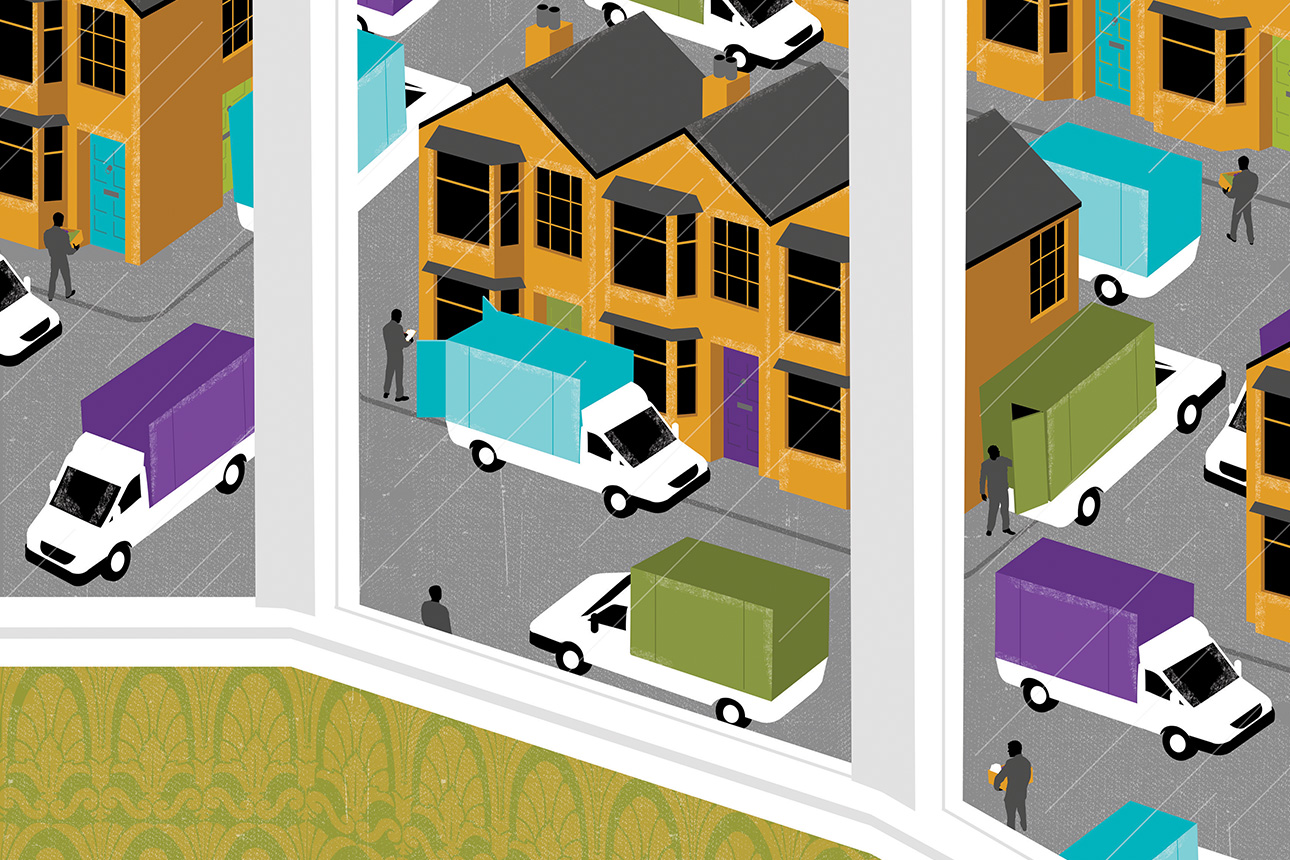Cutting Last-Mile Delivery Costs
New tactics can boost profitability and satisfaction with subscription services.
Topics
Frontiers

Neil Webb/theispot.com
Costco and Amazon subscription services were just the beginning. Consumers can now subscribe to a pickle-of-the-month club, monthly shipments of coloring books, bimonthly boxes of survival tools, and more. Traditional subscription services, such as newspaper or milk deliveries to people’s homes, have been around for decades. But subscription-based home delivery services have become increasingly ubiquitous for other categories of physical products as well.
Subscriptions offer considerable benefits for companies, predictable cash flow chief among them. But for those that deliver physical goods to customers’ doors, the biggest challenge is last-mile delivery costs that eat away at profits. While subscription-based businesses aren’t the only ones that deal with last-mile costs, they are uniquely vulnerable to these costs and in the best position to reduce them.
Last-mile expenses can account for up to 53% of total supply chain costs, as failed deliveries and higher fuel, vehicle, and labor costs strain the system. Another reason expenses are so high is because it’s difficult to optimize logistics for small orders that must be delivered to many different locations, often within a short window of time. Reducing these costs could make the subscription model much more profitable, but most companies haven’t found effective ways to lower them — even though the recurring nature of subscriptions makes this easier than it is under other business models.
I’m a researcher who studies logistics and supply chain management and has worked with companies in South America, Southeast Asia, Europe, and the U.S. to cut operational expenses using cost-effective strategies such as improved delivery routing and scheduling. Based on my research and experience, I believe that a more effective solution exists. But first, let’s take a closer look at the problem and the strategies companies are using today.
Encourage (or Require) Bigger Orders
Unlike Costco’s uniquely successful annual subscription for access to its warehouse stores, most subscriptions for physical products today rely on home delivery rather than consumers visiting brick-and-mortar locations and transporting goods home themselves.
Some subscriptions focus on sending specialty items to consumers at regular intervals — coffee- or wine-of-the-month clubs, for example — which offers companies some predictability and allows them to plan ahead. Others focus on delivery services, where consumers pay an annual fee for discounted or free delivery along with other perks.




